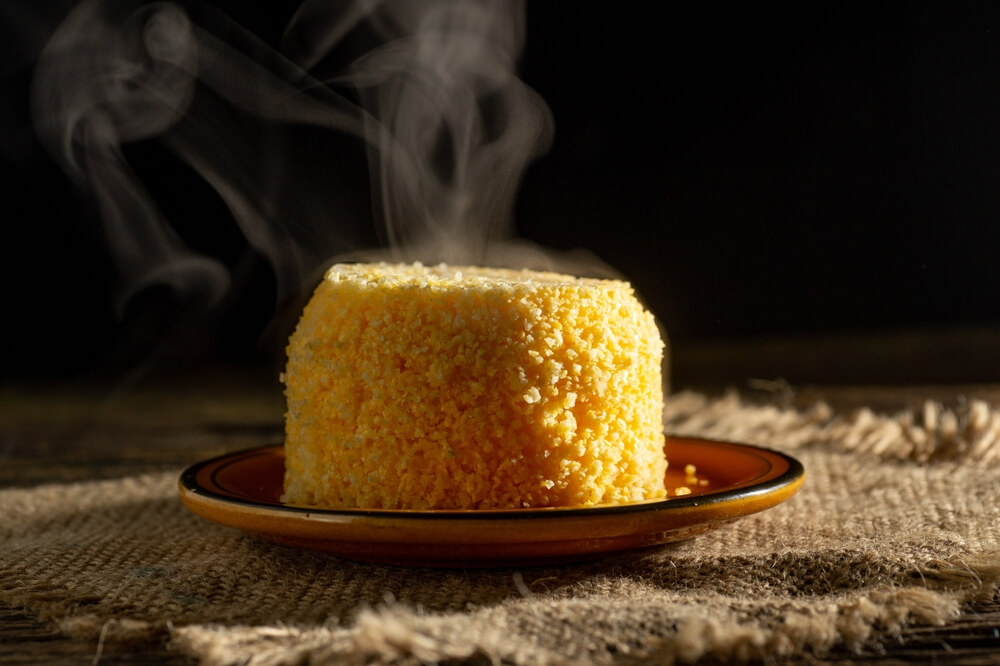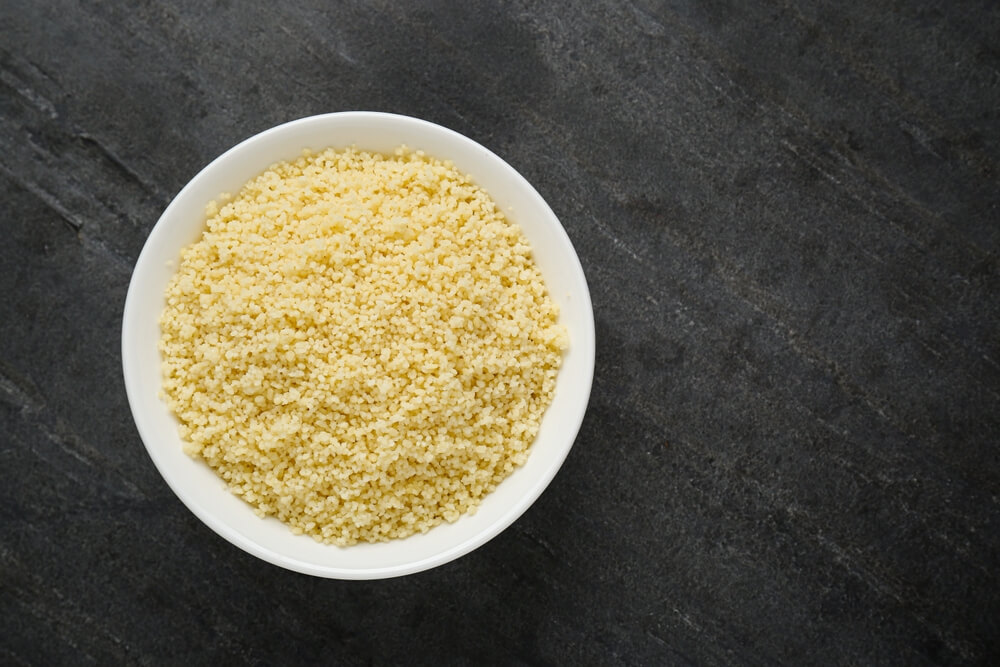
This guide explores couscous, a staple in North African and Middle Eastern cuisines, focusing on its gluten content. We clarify whether traditional couscous contains gluten and offer alternatives like quinoa and rice, noting their nutritional benefits and versatility. Whether you’re evaluating dietary implications or seeking gluten-free grains for your meals, this article provides essential insights for informed eating choices.
Understanding Couscous
Couscous is a staple food in many North African countries, often mistaken for a grain but actually a type of pasta. The basic couscous definition encompasses small steamed balls made from crushed durum wheat semolina. Traditionally, couscous is prepared by sprinkling water over the semolina and then rolling it into tiny granules before steaming them until light and fluffy.
The process of how couscous is made can vary slightly depending on the region and the specific type being produced. Generally, it involves mixing semolina with water and salt to form a dough, which is then rolled into small pellets. These pellets are dried before being steamed or boiled.
Couscous ingredients are typically simple: just durum wheat semolina and water, though variations may include barley or millet in certain regions. There are several types of couscous available today, including traditional Moroccan couscous which is fine-grained, Israeli (or pearl) couscous which features larger, rounder grains with a chewy texture, and Lebanese couscous which has even larger grains similar to small peas.
Understanding these distinctions can enhance your culinary experience when preparing dishes that incorporate this versatile ingredient. Whether used as a base for stews or salads or enjoyed as a side dish on its own, knowing how to prepare different types of couscous can open up new avenues in your cooking repertoire.
The Gluten Content in Couscous

When it comes to understanding the gluten content in couscous, it’s essential to delve into its traditional ingredients and preparation. Couscous is a staple in many North African cuisines and is primarily made from semolina, which is derived from durum wheat. As such, couscous is not gluten-free. This categorizes it alongside other wheat-based foods that contain gluten.
The question “is couscous gluten-free?” often arises among those seeking alternatives for dietary reasons or due to celiac disease. Unfortunately, traditional couscous does not meet the criteria for a gluten-free diet due to its wheat origin. However, for those who love the texture and versatility of couscous but need to avoid gluten, there are alternative options available on the market today. These include variations made from corn or rice flour that mimic the appearance and taste of traditional couscous without containing any wheat-based ingredients.
Understanding the role of gluten in foods like couscous helps individuals make informed dietary choices while still enjoying diverse culinary experiences. For anyone avoiding gluten, it’s always crucial to check labels and ingredient lists carefully when purchasing packaged foods or dining out.
Alternatives to Traditional Couscous for a Gluten-Free Diet
For those following a gluten-free diet, finding suitable alternatives to traditional couscous can be a game-changer. While couscous is often mistaken for a grain, it is actually made from semolina wheat, making it unsuitable for those avoiding gluten. Fortunately, there are plenty of delicious and nutritious gluten-free grains that can serve as perfect substitutes.
One popular alternative is quinoa. Often compared to couscous due to its similar texture and versatility, quinoa offers a complete protein profile and is packed with essential nutrients. When considering quinoa vs couscous, it’s worth noting that quinoa not only fits into a gluten-free diet but also provides more fiber and protein.
Another fantastic option is rice, particularly varieties like brown rice or wild rice. These rice alternatives are naturally gluten-free and can be used in many recipes where you would typically use couscous. They add heartiness to dishes while maintaining the desired fluffy texture.
For those seeking something different yet equally satisfying, try exploring millet or buckwheat groats as additional options. Both of these grains provide unique flavors and textures that can enhance your meals while keeping them gluten-free.
Incorporating these substitutes into your cooking routine not only supports dietary needs but also introduces new flavors and nutritional benefits to your culinary repertoire. With these alternatives at hand, enjoying diverse and fulfilling meals without compromising on taste or health becomes entirely feasible for anyone on a gluten-free journey.
Nutritional Benefits of Couscous and Its Alternatives
Couscous, often mistaken for a grain, is actually a type of pasta made from semolina wheat. Its nutritional value is notable for being low in fat and containing essential nutrients like selenium, which plays a crucial role in protecting cells from damage. Couscous also provides protein and fiber, making it a popular choice for those looking to maintain or lose weight while keeping their meals nutritious.
However, for individuals following a gluten-free diet due to celiac disease or gluten sensitivity, couscous may not be suitable since it contains gluten. Fortunately, there are several healthy grains that serve as excellent alternatives. Quinoa, for instance, is not only gluten-free but also offers complete protein with all nine essential amino acids. Amaranth and buckwheat are other great options that provide high levels of vitamins and minerals while supporting heart health.
Comparing these grains can help you make informed dietary choices based on your nutritional needs and preferences. Embracing such alternatives can enhance your diet’s diversity while ensuring you reap the benefits of a gluten-free lifestyle if required. By exploring various healthy grains, you can enjoy both variety and balanced nutrition in your meals without compromising on taste or dietary restrictions.
How to Incorporate Gluten-Free Alternatives into Your Meals
Incorporating gluten-free alternatives into your meals can open up a world of flavorful and nutritious possibilities. Whether you’re adhering to a gluten-free diet for health reasons or simply exploring new culinary horizons, there are plenty of delicious options to consider.
Start by experimenting with gluten-free recipes that feature quinoa or rice. Both grains are incredibly versatile and can be used in dishes ranging from hearty salads to comforting pilafs. Quinoa, with its nutty flavor and high protein content, pairs beautifully with roasted vegetables or grilled chicken for a balanced meal. Rice, on the other hand, serves as an excellent base for stir-fries or curries.
Cooking with millet or buckwheat groats offers another dimension to your gluten-free cooking repertoire. Millet’s mild flavor makes it perfect for breakfast porridges or as a substitute for couscous in salads. Buckwheat groats, despite their name, are naturally gluten-free and boast a robust taste that complements savory stews and soups.
For healthy meal ideas without wheat, consider making a list of your favorite dishes and swapping out traditional wheat-based ingredients with these alternatives. For instance, use zucchini noodles instead of pasta in Italian-inspired dishes or try almond flour in place of regular flour for baking treats like cookies and cakes.
The Importance of Reading Labels and Understanding Food Packaging for Gluten Content
Understanding how to check food labels for gluten content is crucial for individuals with celiac disease or gluten sensitivity. Gluten, a protein found in wheat, barley, and rye, can be hidden in many packaged foods under various names. To navigate this challenge, it’s important to familiarize yourself with ingredient lists and allergen statements on food packaging.
When examining a product’s label, look for terms like “wheat,” “barley,” “rye,” or “malt” as these indicate the presence of gluten. Additionally, phrases such as “contains wheat” in allergen statements provide direct warnings. However, identifying hidden gluten in foods requires vigilance beyond these obvious indicators. Ingredients like modified food starch or hydrolyzed vegetable protein can sometimes contain gluten unless specified otherwise as derived from corn or soy.
For those seeking safe packaged foods for celiacs, products labeled as “gluten-free” are generally a reliable choice due to strict FDA regulations ensuring they contain less than 20 parts per million of gluten. Nevertheless, cross-contamination during manufacturing remains a risk; thus opting for brands dedicated to producing exclusively gluten-free items can offer added peace of mind.
By developing the habit of thoroughly reading labels and understanding food packaging nuances related to gluten content, individuals can make informed dietary choices that support their health and well-being.
